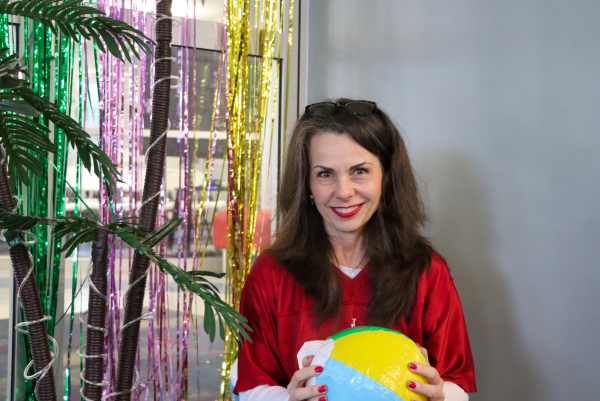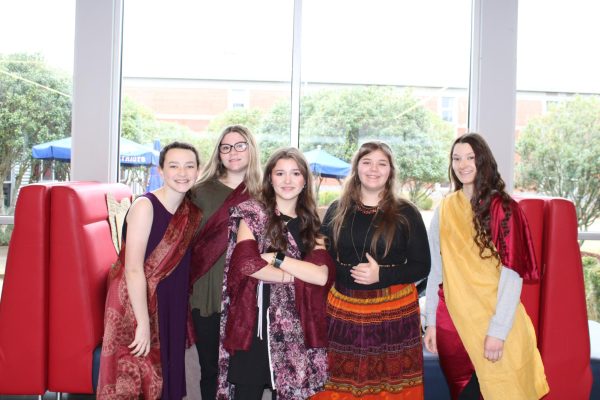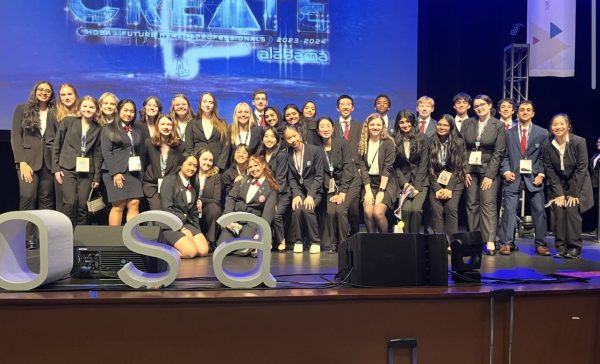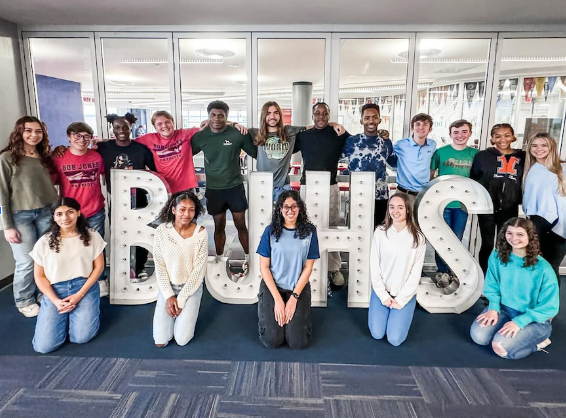The Secret Code of Girls
November 11, 2014
On a scale of 1 to 10, how assertive are you? Take this: Darian Mitchell thinks she’s an 8.
Bob Jones High School senior and Computer Science enthusiast, Mitchell is a prospective software engineer. When asked her thoughts about a world in which girls dominate the technological field? “Cool, but a good amount of guys would also be nice.”
Being the only girl in a class of 13 other males is less daunting than it may seem. Senior Victoria Van in this position feels “indifferent. Honestly, I don’t think there’s a difference.” She asserts that as long as one can think logically and apply mathematical skills, then programming, and the environment that comes with it, is a plausible option.
With the increasing digitalization across the globe, a focus is shifting among males and females to STEM education. In fact, over 95% of all jobs now involve a digital component: so why aren’t more females taking part in information and communications technology?
In a 2012 survey by the U.S. division of the British technology recruitment group, only 9% of all U.S. chief information officers (CIOs) were female, having dropped by 3% since 2010. Not only affecting statistics on a national level, this seeming exclusion of women has also entered the minds of high school students.
When faced with the hypothetical scenario of 30 new girls walking into his computer science classroom on Tuesday, Bob Jones junior James Smith expects that his first reaction would be to check the room number. “As important as computer science is becoming,” he muses, “it is definitely less common to see a girl than a guy.”
Computer Science teacher Jennifer Rountree intends for this to change. The instructor at a STEM camp sponsored by the American Association of University Women this past summer, she realized the intense joy and energy that could be generated from a room of 16 girls with a passion for technological innovation.
“I was asked to teach a week-long camp at UAH [the University of Alabama in Huntsville] called Tech Trek,” she says. “We had three different tracks the girls could choose from – app inventor, life sciences, and robotics. Each track had sixteen girls who were 12 or 13 years old. […] In the classroom, they were eager to learn, inquisitive, and bold about trying new things.”
Perhaps more girls would pursue careers in technology if more tech camps were available over the summer?
Evidently, this is not the case. A quick Google search of “tech camps for girls” pulls up 52.2 million search results of which many are internationally recognized. A budding female computer scientist, it would seem, needs only explore Tech Needs Girls, TechGirlz, Girls in Tech, IGNITE, DigiGirlz High Tech Camp, or TechNeedsGirls to get a jumpstart into the techie world, of which the last program is different from the first. So why is this not the case? (And the catch? The staff at Google behind this search, according to a recent diversity report, is 70% male.)
There are two potential reasons: first, that historical perceptions of the female gender still rule human consciousness, or second, that the approach to STEM education is ready to change.
When Rountree entered her first position in computer science, her first task assigned was to make coffee. Every time her male boss held a noteworthy presentation, she remembers, he “would take me to flip the viewgraphs. I didn’t realize at the time that he was just showing his superiors that he had a female working for him.”
Not only capitalized for her gender, the technology teacher also recalls a specific conference during which this motive was brought into clear light. While waiting for the attendees to arrive, she remembers sitting alone with the same boss at a conference table. “During the awkward silence,” she says, “he spoke up and said, ‘Now what exactly is it that you do?’”
Bob Jones Visual Arts teacher Robin Lakso believes there may be another way to put an end to this gender exploitation. In the international sprint towards STEM, she says, society left behind the arts and the “imaginative and ingenious thinkers” along with it. “Not only would I [encourage the arts], but the University of Alabama School of Engineering is on board.” Lakso illuminates that a combination of the sciences and humanities may be the solution, with a shift from STEM to STEAM, or Science, Technology, Engineering, Arts, and Mathematics.
“Additionally, there is a new program at UAB called the Leonardo Project,” she shares. This is a graduate program at the University of Alabama in Birmingham that integrates art classes with engineering curriculum in homage to the Renaissance Man himself, in order to “create a scholar/scientist/artist ready to meet the demands of the 21st century.”
Rountree agrees with this idea of full STEAM ahead, relating computer science with literature and the creativity often attributed to human sciences. “I tell my students all the time that writing an effective program is like writing a paper,” she remarks. “We split our programs into functions much like a book is split into chapters […and] appreciate the skill and creativity that goes into a large, well-crafted program.” When she was young, Rountree adds, she played the piano, sang in the school choir, and read extensively.
The solution: for a well-rounded individual with eyes for engineering and technology, perhaps one must combine the left and right brain in a science-humanities conglomerate.
With over 340,000 science and engineering degrees obtained by American women in 2010, the percentages of females in technology can only go up.
An aspiring computer programmer, sophomore Winston Van at Bob Jones High School believes that “overall skill in computer science is not skewed in favor of one gender or the other.” Rather, he says, it is self-image that causes disparities in the field, in which case a change in perception could change who populates the field.
In the programming language of C++, says Rountree, an exclamation point followed by an equality sign means “not equal to” with a double equals sign implying the opposite.
To transform “women != technologist” into “women == technologist,” the change is simple. Remove the gender-oriented exclamation, and add a sign of equality.












